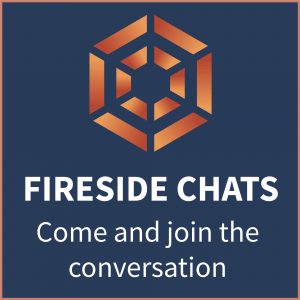So you’re a small business, and getting your voice heard is becoming harder and harder in a cluttered online world.
Consumers don’t want to be ‘sold to’ and marketing automation is becoming less effective. Why? Because we want to hear and see authentic voices. We don’t want bombarded with ads or sales emails thrusted into our faces.
In fact consumers are increasingly turning to adblocking software to avoid ads being so disruptive to their daily lives. So how on earth do you drive your business forward? There is a lot to learn from influencers (or content creators as a lot of them like to be called) heck you might even be one!
These individuals have had a knack of creating an authentic voice that resonates with their audience and building an engaged community. So why on earth do we follow these people in our busy lives?
Before I answer this question, I just thought I’d let you know I delivered a Fireside Chat on this topic. A quick insight video is down below!
Back to answering the question, Younger consumers (who trust traditional advertising the least to the tune of just 1%) connect with their peer influencers because they resonate with their values.
If you think of the Pandemic, the government had to get a message about mask wearing to as many people as possible, and with a younger population not listening to radio or watching TV, how would they get them to comply? …well by working with trusted influencers, often in the medical fraternity like Dr Alex was hugely popular on Tiktok.
I have been recently watching a Youtube video from a fitness expert Lucy Wyndham-Read, and was very impressed by her 7 minute work outs. Her free videos have been downloaded millions of times, but she uses it very cleverly to promote her paid programs, Facebook communities and her books.
She has been totally engaged in her community because she is delivering bite sized and relevant content. She is also providing social proof for what she does, created by the people she has helped.
We follow content creators for a number of reasons, we want to learn something new, discover new tools, learn new skills, be entertained, be inspired and so much more. How many of you regularly read newspapers versus scrolling your social feeds?

So should this matter to you?
Influencers have engaged communities that will match your target audience which you ideally want to reach out to as well.
So by partnering with an influencer this could be a great way to reach this audience. Finding the right influencers that match your criteria isn’t always easy which is why there are online sourcing portals, and experts able to do this for you.
Often a good place to start is building an excel spreadsheet listing these ideal influencers, noting their follower numbers on Instagram, Facebook, Linkedin, Twitter and of course Youtube subscribers too (whichever is relevant to your market).
Remember whatever platform the bulk of your target audience visits would be best placed to search for influencers, and you can use specific hashtags to find them.
Before you reach out to influencers, you must use the right language, they are NOT employees and if you are not paying them there is no guarantee even with gifting that they will post content.
Start following them on social media and try to build up a relationship. The best influencer programs work when there is genuine collaboration where the influencer would have paid for your product anyway and they believe in it. These partnerships often develop into ambassador programmes.
So why would an influencer want to work with me?
Good question you ask. Well the number one preference for an influencer is where you are paying for their content creation and amplification. However, this is not the only method of collaboration, remember they want to grow their audience and keep their community satisfied with relevant, interesting and entertaining content.
Can you give them limited access to something? A discount for their followers? A VIP experience? A free gift? A commission for driving traffic to your site?
Within the B2B sector I have worked with influential people like CEOs of trade associations by interviewing them for a piece of research. The Covid Impact report included over 40 interviews with CEOs and this has helped me develop relationships with all those people involved, some of which have gone onto buy programmes from me. The most recent report I compiled I found an influencer platform, Onalytica and pitched the idea of doing the research for the Social CEO. They agreed to it, no money was exchanged but we have created a 47 page report analysing over 50 CE0s social media performance over the last year.
This provided a lead magnet not only for those in the report but for others keen to get in it.
Can you become an influencer?
Sure anyone can become an influencer… but not overnight. It takes time to build up a credible relevant and ideally niche audience. So here are some of my tips.
Firstly do your research and go and find 10 competitors or exemplars in your field. Review their last 10 posts on the most relevant network and assess the level of feedback and engagement they get. This exercise its not hugely cumbersome but will give you some interesting insights – that you can hone into your influencer strategy.
You need to know what type of content works by testing, testing and testing again. The biggest influencers are hugely skilled at this and know their analytics.
The other area to consider is to use relevant hashtags consistently and these need to be researched too. Save these on your notes part of the phone so you can copy and post to feeds.
You can also start to look at your competitors or exemplars follower base and reach out to some of them. Be consistent in your posting at least 5 times a week on Instagram, 3 times a week on Twitter and Linkedin and at least once a week on Youtube.
Content creation takes time, but amplification and distribution is just as important. Commenting on other major thought leaders posts is great idea. Commenting on targeted Facebook or Linkedin groups is also a good idea.
People follow individuals with purpose, knowledge and entertainment value. I wanted to share an example of the day I launched my book online which was as you can imagine a momentous day after it took over 18months to write. The Linkedin post needed to work otherwise I wouldn’t have been seen to be very influential. Anyway you can see from this post I used a very personal photo, I tagged some of the people involved in contributing towards the book, hoping that some of them would repost. Because the story was a personal one it resonated really well. The post generated over 16,000 views, 141 comments and 15 shares.

However somebody else I recently had a conversation was is a young man with a very challenging upbringing, who told the story of his mental health issues and how he was overcoming them. Now owner of Stigma clothing one of his most successful posts generated almost a million views. Jordan would be somebody that would say WTF… look whats happened to me!
Even if you don’t want to be and influencer per se, there are lessons to be learned about raising your profile, reaching your target audience and getting them to engage with you. Issues we will be discussing on the Fireside Chat.
ABOUT THE AUTHOR
Gordon Glenister is a highly experienced sales and marketing professional; who has worked with a number of recognised businesses over the years including many household names. Gordon’s main area of focus is membership and influencer marketing.
He is a speaker, author, trainer and coach and a proud member of the Hivemind community.




